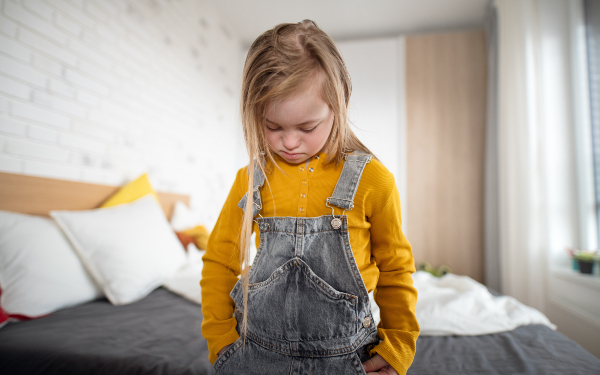
By Beverley Samways
There is a large body of research that seeks the lived experiences of people who self-harm.
This has informed our understanding as to why people hurt themselves and the sorts of responses that are most effective.
The vast majority of self-report studies with people who self-harm reported that emotional distress in response to adverse experiences was a primary risk factor.
Bereavement is one of the adverse experiences mentioned in relation to self-harm.
Rhonda Lesniak’s 2010 research into the lived experiences of adolescent females who self-harmed reported that, “the loss of a loved one at a young age is common among adolescents who self-injure”.
Focus on environmental triggers
However, for someone with a severe learning disability who is hurting themselves, emotional distress in relation to adverse experiences is much less likely to be considered as an explanatory factor.
Instead, the focus tends to be on immediate ‘triggers’ in the environment: what might the individual be trying to communicate about their needs or wants, including in relation to pain and sensory processing?
This is illustrated by the standard focus in behaviour charts of what happened ‘just before’ self-injury, as the primary way of analysing why it might have happened.
Whilst immediate triggers are important to consider, the small amount of research asking people with learning disabilities about their own self-injury found that participants rarely talked about triggers.
Instead they talked about their self-injury in relation to experiences of emotional distress that often happened in response to adverse experiences, including bereavement.
The role of grief
In 2021-22, three teenagers with severe learning disabilities and a history of self-injury participated in an eight-month research project to understand the emotional factors relating to their self-injury.
Grief was found to be a significant factor for one participant, whilst there was some evidence of loss or separation anxiety for the other two.
Loss is an experience easily neglected for people with learning disabilities.
Somehow, when a person with learning disabilities loses someone close to them, the idea that their grief might need to be processed and journeyed can get lost.
If they cannot speak about their loss, where does it go?”
With no intentional support to process the feelings of loss and grief, self-injury can become an option of last resort for providing an immediate release, or numbing, of overwhelming emotion.
The need for active bereavement support
Without active support for loss and bereavement, people with learning disabilities run significant risk of experiencing disenfranchised grief, which can lead to expressions of distress through various behaviours, including self-injury.
Owen Doody wrote, in 2014: “Disenfranchised grief occurs when an individual experiences a loss but that loss is not openly acknowledged, socially supported, or openly mourned. Thereby the person experiences a loss, but has no socially sanctioned right to grieve.”
It is very common for staff to struggle to support a person with severe learning disabilities with a bereavement.
This is rarely because staff are callous or insensitive, but much more likely to stem from anxiety about how to support the person with their feelings, particularly if they have little or no spoken communication.
Challenges for staff
It is often a struggle for support staff to know whether, and how, to communicate with people with learning disabilities about bereavement.
As Robin Grey wrote (2010), “people can make huge efforts to protect the person with learning disabilities from loss in the misplaced belief that they will not be able to hold its emotional reality”.
Instead, it can feel more manageable to look for an immediate trigger than consider that a person may be expressing complex feelings in relation to the loss of a loved one.
A trauma-informed response
However, individuals with learning disabilities do grieve and they do not spontaneously recover: they need active support to work through their grief, just as anyone does. How can we respond?
- Where ordinary behavioural analysis and interventions are not adequately helping an individual to reduce their self-injury, trauma and attachment-informed specialist help should be sought to consider the role of previous adverse experiences and emotional distress, including loss or bereavement.
- In addition, where a person with severe learning disabilities is bereaved (even if it was many years ago), staff teams should be offered tailored support through workshops and reflective practice to identify atypical expressions of grief and develop the bespoke and person-centred emotional support the individual needs.
Beverley Samways is the founder of the consultancy Unique Connections, which works to improve the lives of children and adults with learning disabilities who self-injure, including through working with schools and care providers. She recently completed a PhD, funded by the Economic and Social Research Council, entitled Non-spoken stories: an ethnographic account of the emotional lives of three teenagers with severe learning disabilities who sometimes self-injured.
References
Doody, O (2014) ‘Loss and grief within intellectual disability’, Frontline, 95
Grey, R (2010) Bereavement, loss and learning disabilities : a guide for professionals and carers Jessica Kingsley.
Lesniak, RG (2010) ‘The lived experience of adolescent females who self-injure by cutting’, Advanced emergency nursing journal, 32(2)
Samways, B, Heslop, P, & Dowling, S (2022) ‘Self-reported explanations for self-injury by people with intellectual disabilities: a systematic review of qualitative studies’, International Journal of Developmental Disabilities, 1–15.


 Family help: one local authority’s experience of the model
Family help: one local authority’s experience of the model  ‘I spent the first three months listening’: how supportive leadership can transform children’s services
‘I spent the first three months listening’: how supportive leadership can transform children’s services  How senior leaders in one authority maintain a culture of excellence
How senior leaders in one authority maintain a culture of excellence  How staff support ensures fantastic outcomes for children and families
How staff support ensures fantastic outcomes for children and families  Workforce Insights – showcasing a selection of the sector’s top recruiters
Workforce Insights – showcasing a selection of the sector’s top recruiters 

 Facebook
Facebook X
X LinkedIn
LinkedIn Instagram
Instagram
Comments are closed.